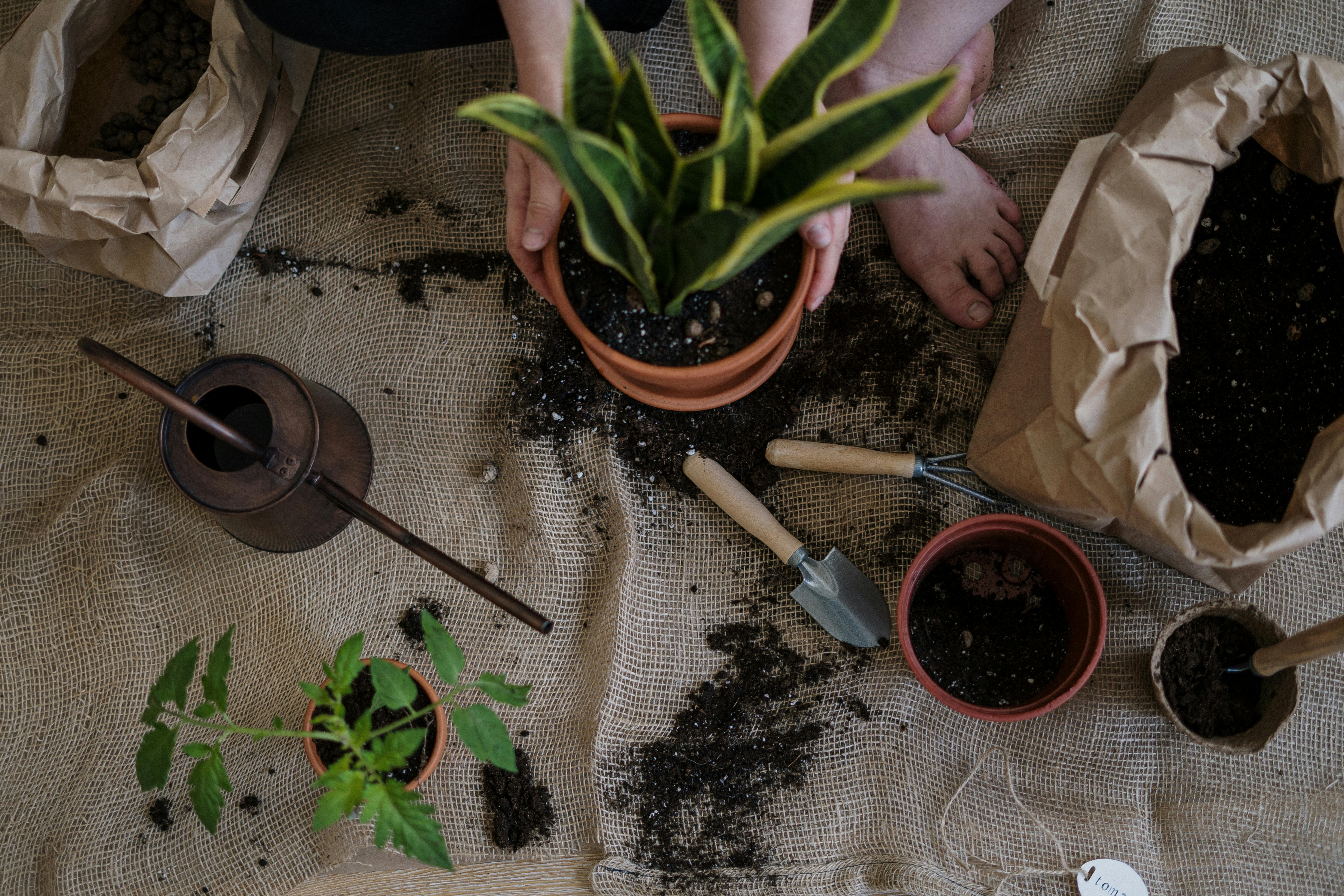Strawberries are a delicious and nutritious fruit that is enjoyed by many people around the world. They are easy to grow and require minimal maintenance. But can strawberries grow in clay soil? Clay soil can be challenging for growing fruits and vegetables, but with the right knowledge and care, it is possible to successfully grow strawberries in clay soils. In this article, we will discuss how you can prepare your clay soil for growing strawberries as well as tips on how to care for them.Yes, strawberries can grow in clay soil. Clay soils are heavy and dense and do not drain well, but with the addition of organic matter such as compost, straw or leaves, the soil’s structure is improved and it can be suitable for growing strawberries. Additionally, clay soils tend to be more nutrient-rich than other soil types, which is beneficial for strawberry plants.
How Does Clay Soil Affect Strawberry Growth?
Clay soil can have a significant impact on strawberry growth. Clay soil is often dense and heavy, making it difficult for water and air to penetrate. If the soil does not contain enough air or water, the strawberry plants will not be able to develop properly. Additionally, clay soils tend to be more acidic which can lead to poor root development and nutrient deficiencies.
Strawberry plants need plenty of nutrients and water in order to thrive, so when grown in clay soil, these needs must be met by other means. A raised bed or container with amended soil is a great option for growing strawberries in clay soil. Amending the soil with compost or other organic matter will help to improve drainage and aeration while also adding essential nutrients.
In addition to amending the soil, it is important to keep the area around the strawberry plants free of weeds that may compete with them for water and nutrients. Mulching around the plants can also help by providing insulation from temperature fluctuations and helping retain moisture in the soil.
Finally, it is important to choose varieties of strawberries that are suited for clay soils. There are some varieties that are more tolerant of these conditions than others. It’s best to check with your local extension office or nursery for recommendations on varieties that will do well in your area’s particular clay soils. With a little extra care and attention, you can enjoy a successful harvest of delicious strawberries even if your garden has clay soil!
Clay Soil and Strawberries
Clay soil provides a range of essential nutrients for strawberry plants. It is high in organic matter which helps to hold moisture and nutrients in the soil, providing a steady supply for the plant’s roots. Clay soil is also high in phosphorus, potassium, calcium, trace minerals and beneficial microorganisms that help to improve the health of your strawberry plants. The clay particles also bind together to form a strong structure that helps protect the roots from compaction and soil borne diseases. Additionally, clay helps to retain heat during cold weather, meaning your strawberries can benefit from earlier flowering and fruiting.
Strawberry plants grown in clay soils need to be managed carefully as it can be prone to water logging. As such, it is important to ensure that your soil has good drainage so that oxygen can reach the roots. Mulching with organic matter can help improve drainage and reduce water loss from evaporation. Clay soils tend to be slightly acidic so if necessary you can add lime or other amendments before planting your strawberries to raise the pH level of the soil. With adequate management of moisture levels and appropriate amendments, clay soils are an excellent choice for growing strawberries.
Is Clay Soil Good For Growing Strawberries?
Clay soil has its advantages and disadvantages when it comes to growing strawberries. One of the biggest advantages of clay soil is that it holds moisture well, helping to keep plants hydrated during dry spells. Additionally, clay soil retains its structure for a long time, which can be beneficial for strawberry plants that require a lot of nutrients in order to grow and produce fruit.
However, clay soil can also be quite dense and hard to work with. Compacted clay can make it difficult for roots to penetrate, limiting the amount of water and nutrients available to the plant. Additionally, clay soils are generally low in organic matter, which is important for providing nutrients to plants and creating a healthy environment for them to grow in.
To make the most out of clay soil when growing strawberries, gardeners should focus on adding plenty of organic material such as compost or manure in order to increase its nutrient content and create a better environment for roots to penetrate. Additionally, planting strawberry plants slightly raised above ground level can help improve drainage and reduce the risk of root rot caused by overly wet conditions. With proper care and attention, even clay soils can be used successfully for growing strawberries.
Prepare The Soil
Proper soil preparation is essential for growing strawberries in clay soil. Clay soils are typically heavy and slow draining, so it is important to incorporate plenty of organic matter, such as compost or aged manure, into the soil. This will help improve drainage and aeration, while also providing additional nutrients to the strawberry plants. It is also a good idea to test the pH of the soil before planting and adjust as needed. Strawberries prefer a slightly acidic soil with a pH between 5.5 and 6.5.
Choose Varieties Wisely
When it comes to choosing strawberry varieties for clay soil, opt for varieties that are labeled as “clay tolerant.” Some good clay-tolerant varieties include ‘Chandler’, ‘Camino Real’, ‘Ogallala’, and ‘Seascape’. These varieties have been specifically bred for their ability to thrive in heavy soils with slow drainage.
Mulch The Beds
Mulching the strawberry beds can help reduce weeds, conserve moisture, and keep the fruit clean and protected from disease organisms in clay soils. Straw or pine needles work well as mulch materials for strawberry beds in clay soils. Make sure to spread the mulch evenly around each plant, but be careful not to cover up any of the leaves or stems of the plant with the mulch material.
Water Properly
It is important to water deeply when growing strawberries in clay soils. Clay soils can take longer than other types of soils to absorb water, so make sure that you are giving your strawberry plants enough water each week – about one inch per week is ideal – especially during periods of extended dry weather or extreme heat. Water slowly and evenly over the entire area, rather than concentrating all your watering onto one area or just one plant.

The Benefits Of Planting Strawberries In Clay Soil
Strawberries are a delicious and nutritious fruit that can be grown in many different types of soil. Clay soil is one type of soil that can be used to grow strawberries and it has many advantages. Clay soil is known for its ability to hold moisture, which is beneficial for strawberry plants. The clay also provides good drainage, which helps keep the plants healthy and free from disease. Additionally, clay soil tends to be more nutrient-rich than other types of soil, providing the perfect environment for strawberries to thrive.
Moisture Retention
One of the primary benefits of planting strawberries in clay soil is its ability to retain moisture. Clay soils have a higher water-retaining capacity than other types of soils, making it ideal for growing strawberries. This helps ensure that the plants have a consistent supply of water without having to be watered frequently. Additionally, moisture retention helps protect the plants from drought conditions and can help prevent them from drying out in the hot summer months.
Good Drainage
Another advantage of planting strawberries in clay soil is its good drainage capabilities. Clay soils are known for their ability to drain away excess water quickly, helping keep the roots healthy and free from diseases such as root rot. This also allows oxygen to reach the roots, which aids in promoting healthy growth. Additionally, good drainage helps keep the strawberry plants from becoming overly saturated with water and allows them to grow without becoming bogged down by too much moisture in their environment.
Nutrient Rich Environment
Clay soils are also known for being nutrient-rich environments that are ideal for growing strawberries. Clay soils tend to contain higher levels of organic matter than other types of soils which provide an abundance of nutrients for strawberry plants to draw upon as they grow. This helps promote healthy growth and encourages larger fruit yields as well as better tasting fruits overall.
Overall, there are many benefits associated with planting strawberries in clay soil including moisture retention, good drainage capabilities and nutrient-rich environments that help promote healthy growth and larger fruit yields. If you’re looking for an ideal environment for your strawberry plants then clay soil is definitely worth considering!
Do Strawberries Need Amendments In Clay Soil?
Strawberries will grow in clay soil, but they will need a few amendments to help the plants thrive. Clay soil can be heavy and dense, resulting in poor drainage and an environment that is not ideal for strawberry plants. Adding organic matter such as compost or manure can help to improve the texture of the soil, making it easier for the roots to spread and absorb nutrients. Also, adding a layer of mulch on top of the soil can help to reduce weed growth and retain moisture for the plants. Finally, fertilizing regularly with a balanced fertilizer will ensure that your strawberries get all of the nutrients they need to grow and produce delicious fruit. With these amendments, your strawberry plants should be able to thrive in clay soil.
Improving Clay Soil for Growing Strawberries
Clay soil is a great soil type for growing strawberries, but it can also be difficult to work with. Clay soils tend to be dense and can hold water, making it difficult to aerate the soil and establish good drainage. Improving clay soil can help you grow healthy and delicious strawberries in your garden. Here are some tips on how to improve clay soil for growing strawberries.
The first step in improving clay soil is to add organic matter such as compost or aged manure. These materials will help break up the clay particles, allowing water and air to move more freely through the soil. Spread 2-4 inches of organic material over the surface of your strawberry bed and then use a spade or shovel to incorporate it into the top 6-8 inches of soil.
The next step is to add some sand or coarse grit into the top 6-8 inches of soil. This will help further break up the clay particles and improve drainage. Be sure that you use a coarse type of sand or grit, as fine sand may not be effective in improving drainage. Once again, use a spade or shovel to incorporate the sand into your strawberry bed.
Finally, you should add some fertilizer to your strawberry bed once you have improved the texture of your clay soil. Choose a fertilizer specifically formulated for strawberries and follow the directions on the package carefully as different varieties may require different amounts of fertilizer. Adding a slow release fertilizer every spring will help keep your strawberry plants well nourished throughout the growing season.
By following these steps, you can easily improve clay soils for growing delicious strawberries in your garden!

Conclusion
In conclusion, strawberries can grow in clay soil if the right amendments and measures are taken. The soil needs to be amended with organic matter, lime, and fertilizer to create a well-drained growing environment. Strawberries will also need good levels of moisture, sunlight, and protection from diseases and pests. With these conditions met, strawberries can thrive in clay soil and produce sweet fruit.
It is important to remember that clay soil is not ideal for strawberry growth. If possible, it is recommended to grow strawberries in loam or sandy soils as they are better able to provide the necessary nutrients and water for healthy plants. Nevertheless, with the right care and attention, it is possible to successfully grow strawberries in clay soil.



